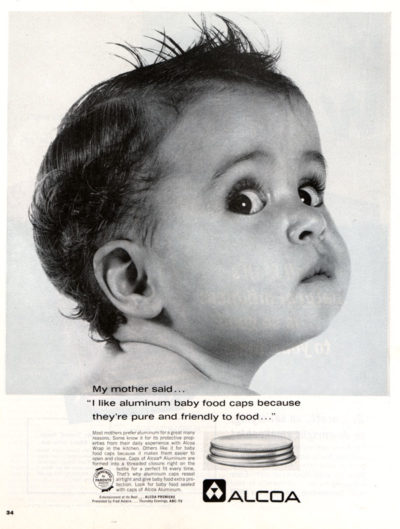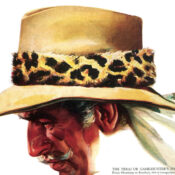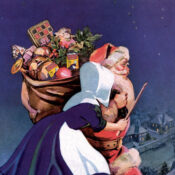Each week, nearly 2 million Americans watch the AMC show Mad Men: a meticulous recreation of the world and the people of an ad agency in the early 1960s.
What is surprising is the show’s popularity among younger viewers—who never saw the 1960s (or the ’70s or ’80s).
You would expect Mad Men to be popular among baby boomers. Every story line, every character, and every set features historical detail of the period that can trigger memories, if not nostalgia, among Americans who lived in those years—whether or not they worked for a flashy New York ad agency.
But how do you account for the show’s loyal viewers among 20-year-olds?
It might be the fascination of watching an America that is both foreign and familiar. The foreign America can be seen in the characters’ enthusiastic drinking and smoking, which is pursued on a scale that only our grandparents could relate to.

The familiar America is the world of advertising, which is so much a part of our lives in 21st-century America, it is almost our second language. We hear advertising’s familiar accents in politics, health care, education, religion, even in personal relationships.
Modern advertising proved itself in the 1920s. By the 1960s, though, it grew up.
Advertisers dropped the folksy tone and sensible appeals they were still using in the 1950s to sell their cars and laundry soap. The new ads were more colorful, more creative, and more entertaining. Major advertisers used copy and visuals so effective that, viewed today, they offer a fresh, vibrant view into that decade.
Of course, The Saturday Evening Post was an important part for any national ad campaign. Our readers comprised a highly desirable group of buyers, and the pages of our 1963 issues offer a broad window into the business and culture of the times.
If you’ve been following some of the plotting and machinations at Sterling Cooper, you may be interested in some of the finished products of 1963 ad campaigns. We’ve also included a few of the articles that surrounded these ads. In future Retrospectives, we hope to offer other advertising and visuals from this fascinating era to keep pace with the story line.
Become a Saturday Evening Post member and enjoy unlimited access. Subscribe now




Comments
Mad Men is an amazing drama, I can’t wait for the Nov 8 finale!
If you’re a true fan, you should check out the Basket of Kisses blog. http://www.lippsisters.com/
‘Mad Men’ is a cool show, but so was the Saturday Evening Post in 1963. I love the fact you’re sharing some of the great ads that typified the time period. One thing you’ll notice is that by that time, nearly all print ads were photographic. Most ads into the ’50s utilized illustration over photography.
You can see a year by year increase of photo ads (over artwork) starting around 1955 in the POST. The issues of the POST from the 1962-’68 were from a period of turmoil for the magazine, and have been unappreciated and misunderstood by many POST fans; largely due to the photo covers over illustration.
From a perspective of 40+ years later, they should be, and need to be appreciated for the fine covers they were and bullseye correct for the times. There are a good many I could mention, including 4 of the Beatles, Sonny & Cher, the Hippie Movement and covers of the JFK Investigation.
Some of the best covers were at the very end of the old POST’s life. In late 1968 these included a very usual cover of Faye Dunaway, the Laugh-In Girls, and a still timely cartoon cover asking the question “Are We Heading Toward the Day Everything Stops?’ Interestingly, the beautifully re-designed POST logo of ‘68 only used for several months, was really the beginning of the all-new POST coming in 1971. The rest is history of course, with the POST being on steady ground ever since.
Bob McGowan